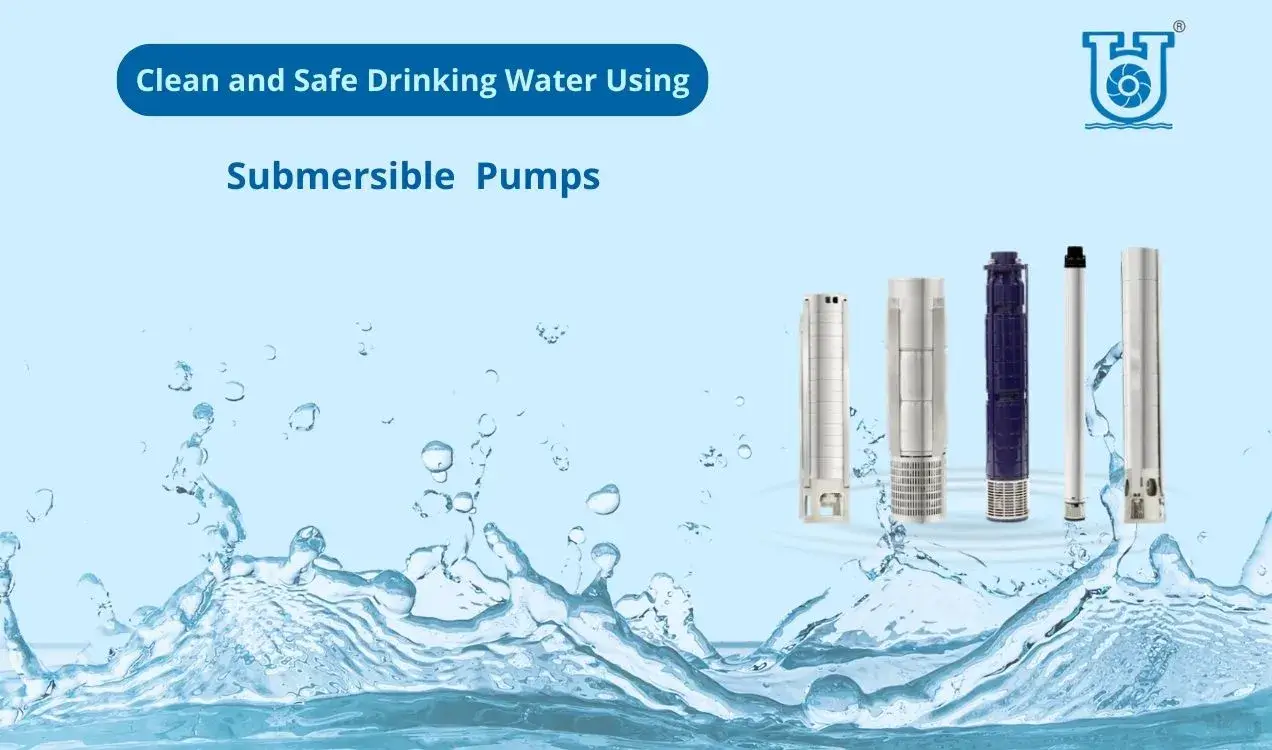Submersible pumps serve a vital role in delivering pure and safe drinkable water. These pumps are intended to safeguard water supplies from pollution, making them crucial for delivering pure water for consumption, agriculture, and many industrial purposes. They are also utilised in groundwater extraction, effluent treatment, and agricultural irrigation, contributing to sustainable water resource management.
The usage of submersible pumps is vital in providing people throughout the globe with access to pure water, as emphasised by organizations like UNICEF. Therefore, analysing the relevance of submersible pumps in water delivery is vital to comprehending their significant contribution to guaranteeing clean and secure drinkable water for everybody.
How Submersible Pumps Work
Submersible pumps are intended to function underwater and are very effective at propelling water without the need for priming. The concept of operation includes the employment of a motor that powers an impeller, which causes a pressure differential that propels water to travel through the pump and out of the discharge conduit.
The components of submersible pumps include the motor, impeller, diffuser, and seal, which are intended to survive the severe underwater environment. The benefits of submersible pumps are their high efficiency, capacity to manage solids and liquids, discreet operation, and no cavitation concerns. These pumps are extensively employed in diverse applications, such as residential water supply, agricultural, mining, sewage treatment, and industrial operations.
Groundwater Extraction and Quality
Efficient Water Extraction:
Submersible pumps are highly effective in extracting groundwater from wells and boreholes. Their submerged design allows them to push water to the surface, eliminating the need for suction and priming. This efficiency ensures a continuous and reliable water supply, especially in areas where surface water may be scarce.
Preserving Water Quality:
Maintaining water quality is paramount for ensuring the safety of drinking water. Submersible pumps operate in a closed system, reducing the risk of contamination. Because they are submerged, they are less susceptible to external pollutants and are more effective in preventing the intrusion of debris, bacteria, or other contaminants.
Key Features and Advantages
Sealed System:
Submersible pumps are designed with a sealed motor, preventing water from entering and damaging the internal components. This design not only enhances the pump’s longevity but also contributes to the purity of the extracted water.
Low Maintenance:
Using energy-efficient submersible pumps may result in considerable cost reductions in water pumping. These compressors are intended to operate effectively, saving maintenance costs and downtime. They also require less energy, resulting in decreased power costs and less carbon emissions. Investing in energy-efficient submersible pumps may bring long-term cost reductions and aid in sustainable water resource management.
Energy Efficiency:
Certain submersible pump types use up to 50% less energy than conventional pumps due to their very energy-efficient design. Energy-efficient variants aim to minimise the environmental impact of water extraction by improving performance and using less energy. These pumps include new, enhanced designs, energy-saving motors, and cutting-edge control systems that maximise efficiency while reducing energy use.
Applications of Submersible Pumps
Submersible pumps offer a comprehensive variety of applications in numerous sectors.
Domestic Water supply:
There is a wide range of types of submersible pumps out there that can provide homes with a steady supply of clean and safe water. Notably, they are designed to be submerged in wells, boreholes, or other water sources, reducing the risk of surface pollutants seeping into the water supply. The water in these purifiers is kept clean and safe to drink because to the clever filtering systems included in them, which efficiently remove pollutants and microorganisms.
Agriculture and Irrigation:
Submersible pumps are extensively used in agriculture and irrigation, providing a constant and efficient water supply for crops and cattle. They are suited for deep wells and underwater situations, where ordinary compressors cannot be installed. These pumps are frequently used for groundwater extraction, irrigation, and aquaculture, contributing to sustainable water resource management.
Industrial and Municipal Water Supply:
Large-scale water supply projects, such as those serving industries and municipalities, benefit from the reliability and efficiency of submersible pumps. These pumps are capable of handling high volumes of water, making them suitable for demanding applications.
Conclusion
Submersible pumps play a critical role in maintaining clean and secure potable water, with applications in residential water supply, agricultural, and industrial operations. Proper installation and maintenance are necessary for maximum performance and lifetime of submersible pumps. Safety procedures, such as electrical safety, grounding and bonding, and averting contamination, must be followed to guarantee safe operation.
Energy-efficient varieties of submersible pumps may result in considerable cost reductions and aid in sustainable water resource management. Proper installation, maintenance, and usage of energy-efficient submersible pumps are vital for maintaining clean and safe drinkable water for everyone.


